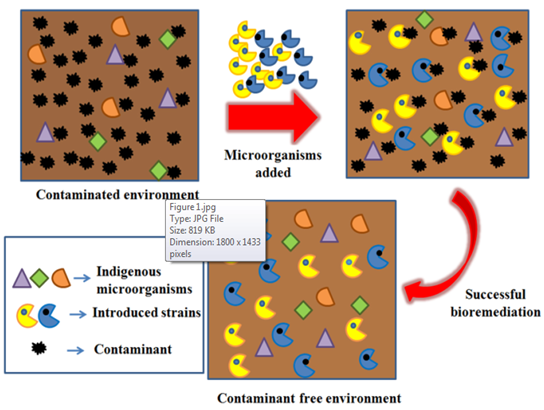Hello everyone!
Welcome back to my Groundwater Remediation series! Today I will be talking about some biological treatment technologies used to remediate groundwater.
In biological water remediation, biologic materials are used to help to break down unwanted chemicals that are not easily separated from the water, particularly in industrial waste that leaches in groundwater. Bioremediation demands that the suitable reactor conditions prevail in order to maintain sufficient levels of living micro-organisms to achieve removal of organics. They are subsequently removed from the water to leave a relatively clean effluent. Biological treatment processes depend on supplying colonies of micro-organisms with optimum quantities of air and nutrients such that the same reactions that occur in natural self-purification processes can work (Speight, 2020).
#1 Biosimulation
Biostimulation refers to the addition of nutrients like phosphorus, nitrogen, oxygen, electron donors to stimulate the existing bacteria to degrade the hazardous and toxic contaminants (Tribedi et al., 2018). The addition of nutrients needed can speed up the degradation potential of inhabitant microorganisms. Biostimulation is considered to be the most efficient method for remediation of hydrocarbons especially petroleum products and its derivatives (Abid et al.,2014). A pictorial diagram of biostimulation can be seen below (Tribedi et al., 2018)

#2 Bioaugmentation
Bioaugmentation, biological augmentation, is the addition of archaea, single-celled microorganisms, or bacterial cultures required to speed up the rate of degradation of a contaminant (Speight, 2020). This is done when the site lacks the appropriate microbes to degrade the pollutants unlike for biostimulation. The most common way to apply is to directly add microorganisms that have specific degradation capabilities to target contaminants (Huang & Ye, 2020). This is typically applied to the bioremediation of chlorinated ethylene derivative though there are other emerging cultures with the potential to biodegrade other compounds. A pictorial diagram of bioaugmentation can be seen below (Tribedi et al., 2018).

Here I have introduced 2 methods in which bioremediation is used however, there are other methods like biosparging where air is injected into the groundwater table for aerobic reactions. There are also methods that make use of living plants that have roots capable of absorbing contaminants from water over time.
An advantage of bioremediation is that the physical pumping of groundwater out to the surface to treat it is not required thus reducing human exposure risk. In addition, bioremediation completely eliminate the pollutant matter to harmless products by using natural microbes which is harmless to the environment as compared to the use of chemicals (Tripathi & Chaurasia, 2018). However, since it is only applicable on biodegradable compounds, some compounds cannot be degraded completely. Bioremediation is also highly dependent on environmental factors and site-specific (Tribedi et al., 2018). Immense observation would be required to ensure that it is working.
That brings me to the end of this post!
See you guys soon!
Reference
Abid, A., Zaafouri, K., Aydi, A., Manai, I., Trabesli, A., Messaoud, C., & Hamdi, M. (2014). Feasibility of a Bioremediation Process Using Biostimulation with Inorganic Nutrient NPK for Hydrocarbon Contaminated Soil in Tunisia. Journal of Bioremediation & Biodegradation, 05(04). doi:10.4172/2155-6199.1000224
Huang, H., & Ye, L. (2020). Biological technologies for cHRPs and risk control. High-Risk Pollutants in Wastewater, 209-236. doi:10.1016/b978-0-12-816448-8.00009-5
Speight, J. G. (2020). Remediation technologies. Natural Water Remediation, 263-303. doi:10.1016/b978-0-12-803810-9.00008-5
Tribedi, P., Goswami, M., Chakraborty, P., Mukherjee, K., Mitra, G., Bhattacharyya, P., & Dey, S. (2018). Bioaugmentation and biostimulation: A potential strategy for environmental remediation. Journal of Microbiology & Experimentation, 6(5). doi:10.15406/jmen.2018.06.00219
Tripathi, S. M., & Chaurasia, S. (2018). Bioremediation of Groundwater: An Overview. Bioremediation of Groundwater: An Overview, 13(24), 16825-16832.








